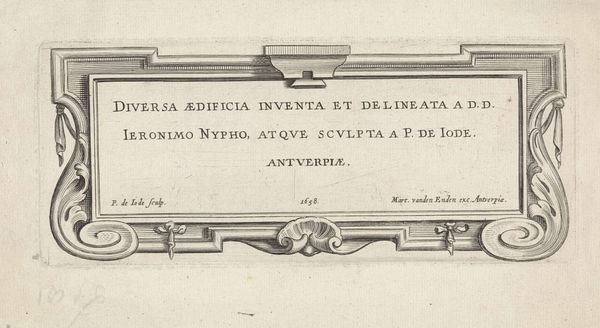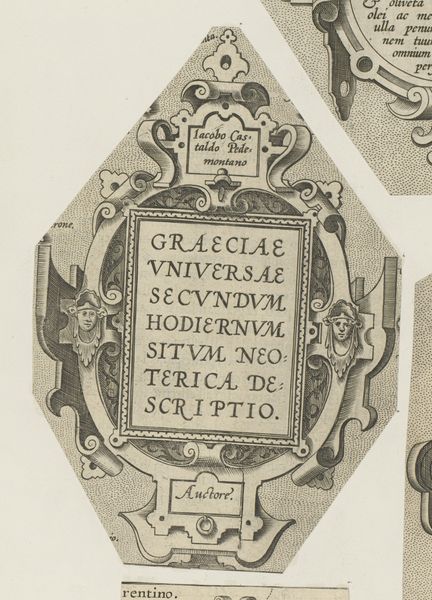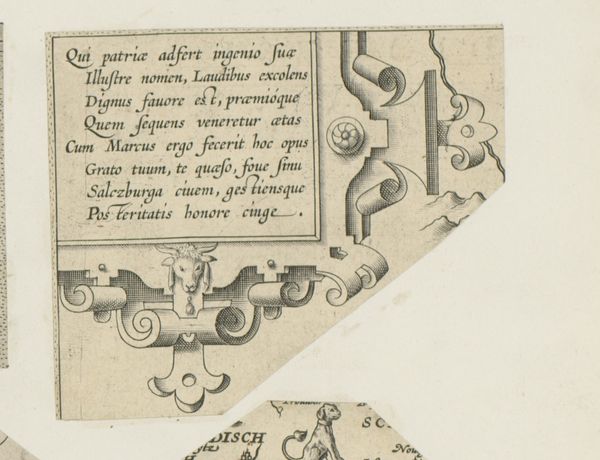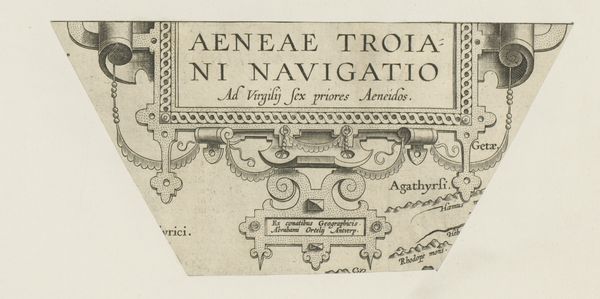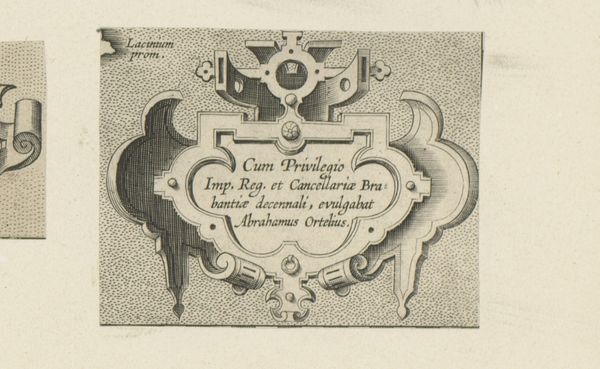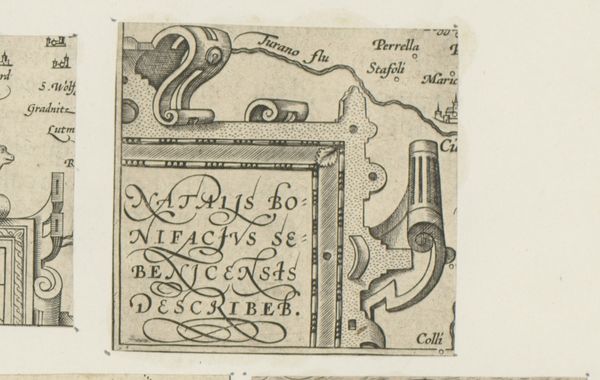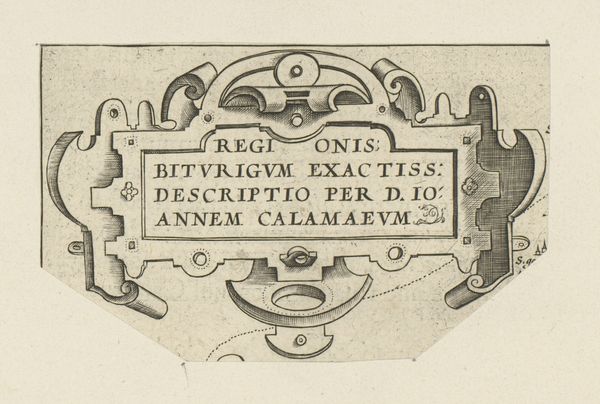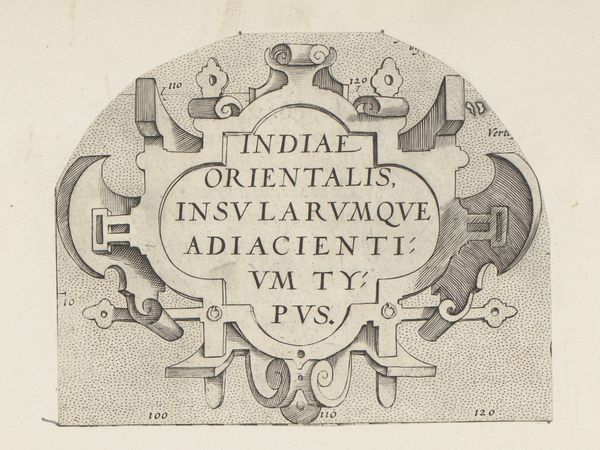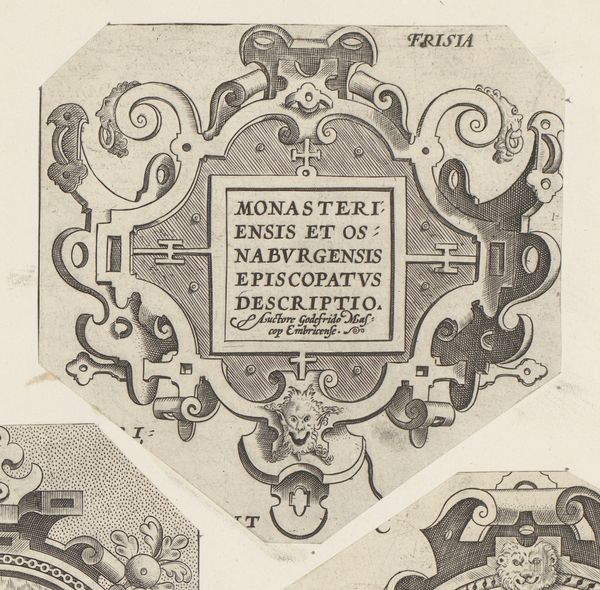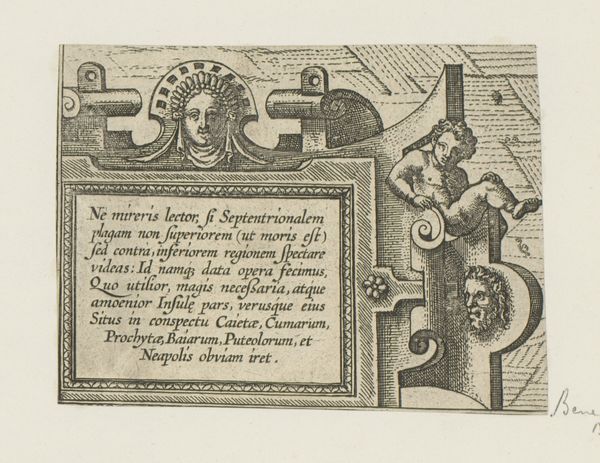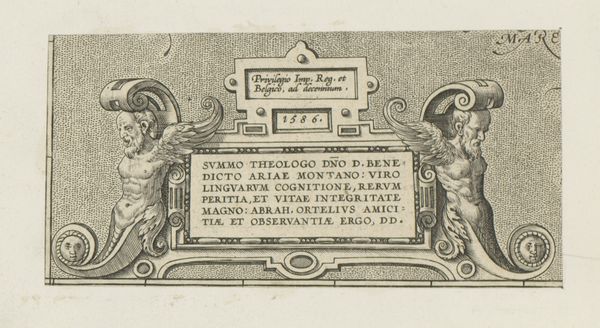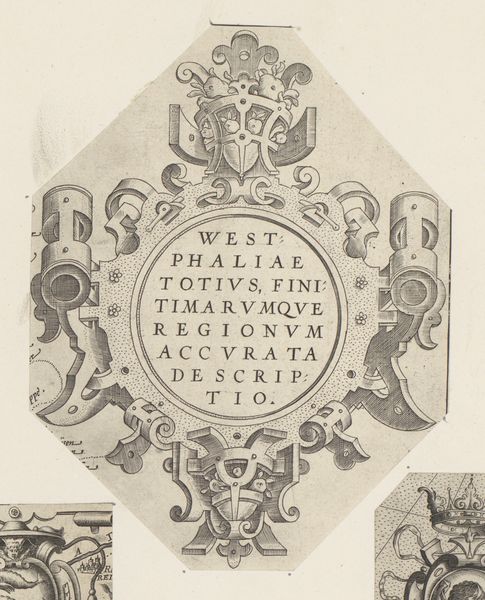
print, engraving
# print
#
11_renaissance
#
geometric
#
italian-renaissance
#
engraving
Dimensions: height 85 mm, width 114 mm
Copyright: Rijks Museum: Open Domain
This anonymous cartouche, likely part of a larger map, showcases the 'rolled' or 'scroll' work motif, framing the title in Latin: Apulia, once Iapygia, a new chorography. The rolled edges, suggestive of parchment unfurling, aren't merely decorative. These evolved from classical antiquity, where scrolls signified knowledge and authority. Consider the Roman emperors depicted holding scrolls, symbols of their power to decree and record. We see echoes of this motif in Renaissance art, where these forms denote wisdom and historical awareness. The cartouche, therefore, becomes more than a label; it is a claim to historical knowledge and geographical understanding. The act of naming and mapping itself becomes a symbolic gesture. It echoes through time, appearing in various forms, each iteration imbued with new cultural significance. The symbol's journey is non-linear, constantly evolving, a testament to the enduring power of images and their ability to evoke deep, subconscious connections across generations.
Comments
No comments
Be the first to comment and join the conversation on the ultimate creative platform.

